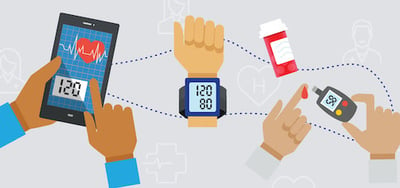 The role of WiFi in telemedicine and remote patient monitoring is becoming increasingly important as more and more healthcare providers adopt these technologies to improve the quality of care they provide to their patients. WiFi allows healthcare providers to remotely monitor patients, providing them with timely, accurate information that can be used to make important decisions about their care.
The role of WiFi in telemedicine and remote patient monitoring is becoming increasingly important as more and more healthcare providers adopt these technologies to improve the quality of care they provide to their patients. WiFi allows healthcare providers to remotely monitor patients, providing them with timely, accurate information that can be used to make important decisions about their care.
Telemedicine is the use of technology, such as video conferencing, to provide medical care remotely. This can include consultations, diagnostics, and even treatment. Remote patient monitoring, on the other hand, involves the use of sensors, wearable devices, and other technology to collect data about a patient's health, which is then transmitted to healthcare providers for analysis and action.
Both of these technologies rely heavily on WiFi to function properly. Without a stable, reliable WiFi connection, telemedicine and remote patient monitoring would be much more difficult, if not impossible.
One of the key benefits of telemedicine is that it allows patients to receive care from a healthcare provider without having to physically travel to a clinic or hospital. This is particularly useful for patients who live in remote or rural areas, or who have mobility issues that make it difficult for them to travel. With telemedicine, patients can simply connect to a healthcare provider over the internet using a computer, tablet, or smartphone, and receive the care they need without leaving their homes.
The use of WiFi in telemedicine allows for high-quality audio and video connections, which are essential for effective communication between patients and healthcare providers. This is especially important for diagnostic and treatment purposes, as healthcare providers need to be able to see and hear the patient in order to accurately assess their condition and provide appropriate care.
In addition to facilitating real-time consultations, WiFi also enables the use of remote patient monitoring. This technology allows healthcare providers to collect a wide range of data about a patient's health, such as their heart rate, blood pressure, and other vital signs. This data is then transmitted to the healthcare provider in real-time, allowing them to monitor the patient's health remotely and intervene if necessary.
For example, a patient with heart disease might wear a wearable device that continuously monitors their heart rate and blood pressure. If the device detects a potentially dangerous change in the patient's condition, it can alert the healthcare provider, who can then take action to prevent a more serious problem from occurring.
One of the main advantages of remote patient monitoring is that it allows healthcare providers to intervene earlier and more effectively than they would be able to if they were only able to see the patient during in-person visits. This can help to prevent serious health problems from developing, and can also reduce the need for hospitalizations and other costly interventions.
In addition to improving the quality of care, the use of WiFi in telemedicine and remote patient monitoring can also help to reduce healthcare costs. By enabling patients to receive care remotely, telemedicine can help to reduce the need for expensive in-person visits. Similarly, remote patient monitoring can help to prevent the need for more costly interventions by allowing healthcare providers to intervene earlier and more effectively.
Overall, the role of WiFi in telemedicine and remote patient monitoring is essential. Without a stable, reliable WiFi connection, these technologies would not be able to function properly, and the benefits they provide would be lost. As more and more healthcare providers adopt these technologies, the importance of WiFi in the delivery of high-quality, cost-effective healthcare will only continue to grow.

